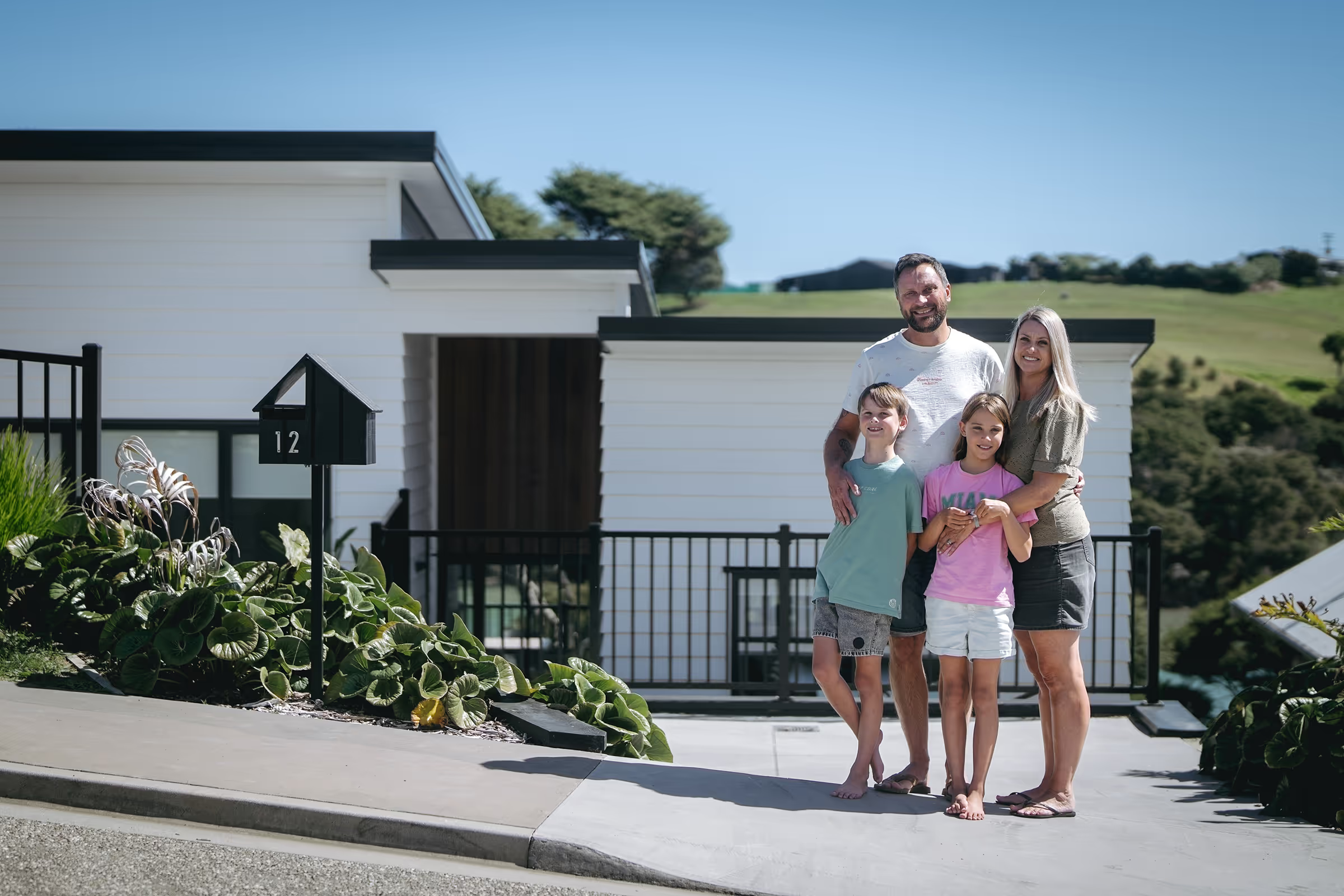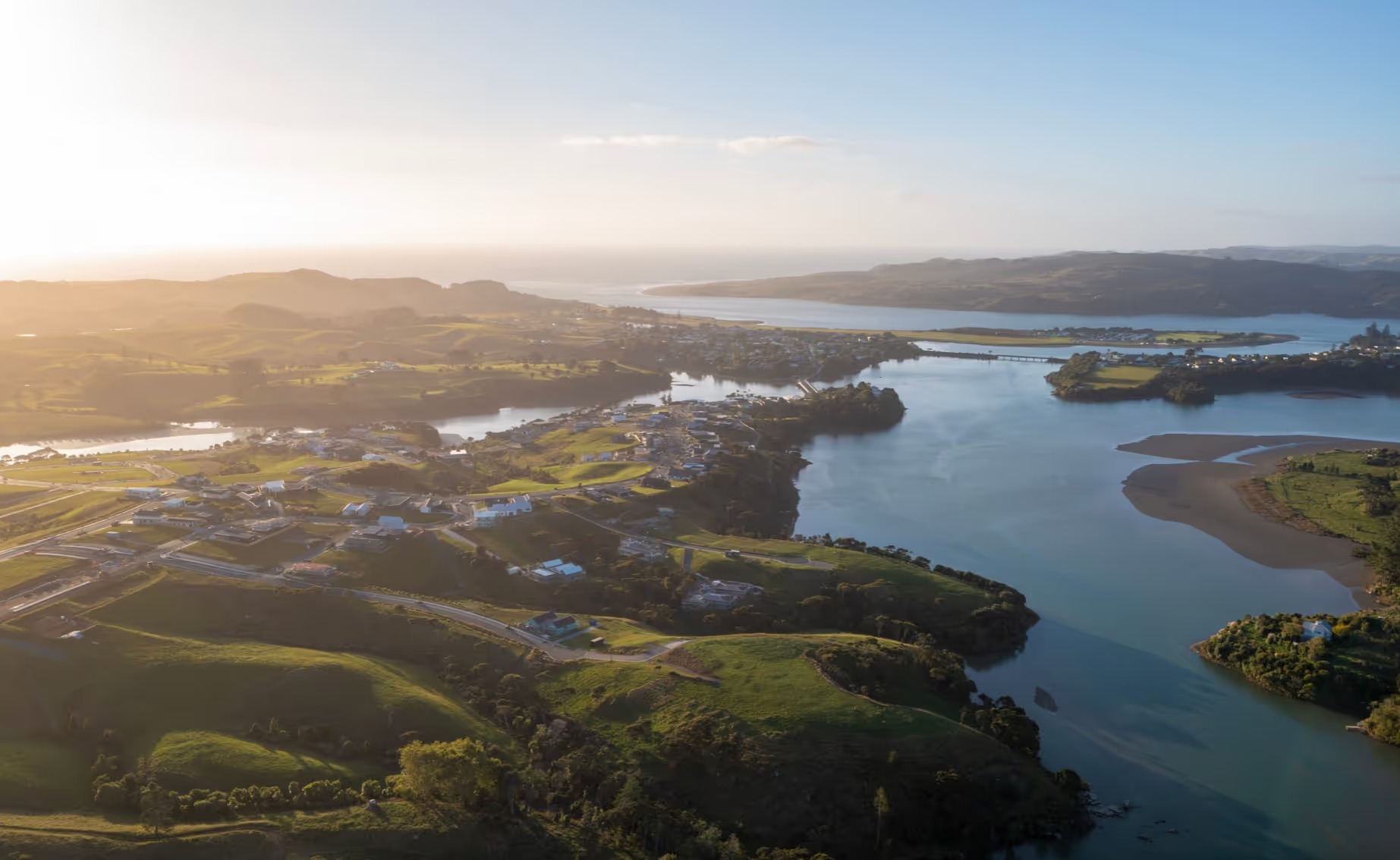Landscape design at Rangitahi: An interview with local designer Peter McCartney
The Rangitahi Peninsula will be well planted with native grasses & trees including Pohutukawa's, and there will be street trees and native garden beds planted throughout the neighbourhood. We think it's important to carefully consider your landscape design for your sections on Rangitahi, as outdoor living spaces are just as important as indoor, and landscaping creates character, frames views, and helps establish a community.
A holistic approach should also be taken when landscaping on the Peninsula, so as to blend in and add to the natural coastal environment. Along with our Design guidelines, we got in touch with local Landscape Architect Peter McCartney on his advice and ideas for landscaping at Rangitahi.
How do you think landscaping adds to a home/new build and why is it important?
Landscaping plays an important part in creating a home especially with a new build as buildings often feel imposed on the site. Planting and landscaping softens the edges and helps to ground the building within the site creating a sense of belonging.It can allow us to extend the boundaries of our living spaces either directly with a deck from a lounge or indirectly through windows. Also it can provide a benefit to the wider community by adding to ecological corridors for birds to move within the peninsula, which brings in and helps to disperse more seeds, benefiting the restoration efforts in the wider region.
We encourage our residents to put time and effort into their landscape design, as it adds to and helps establish a new community. What are some key features you would recommend residents of Rangitahi should consider when landscaping their sections/homes?
Entertainment areas, Lighting, Productive areas (vegetable and fruit), Specific planting for birds, specific planting for bees, service areas (bins, clothesline, garden shed).


The landscaping should also add to and benefit the natural environment on Rangitahi, what kind of plant species would you recommend planting on the Peninsula that will grow well and thrive in the coastal environment?
The most beneficial planting is what naturally occurs in the area. Ecosourced Waikato, the Department of Conservation and local and regional authorities have a good PDF online that identifies locally occurring species which you can find through google “Planting guide for Western Waikato”Pūriri or Kōtukutuku are fantastic trees that will bring in the birds all year round. The puriri enjoys more fertile soil but copes well in a range of conditions. The kōtukutuku prefers shadier areas and is a great attracter of tui, tītapu (bellbird) and kereru (wood pigeon). The more we can provide for the native fauna from the area then the greater natural benefit the peninsula will have as a whole.
What are some cool features you would recommend adding to a front entrance design and why?
Entranceways provides an opportunity to showcase some of the materials and themes you want to incorporate throughout your landscape and your interior design. Feature pots can be way of connecting colour or shape between your inside and outside spaces. Vertical plantings are popular space savers in an entranceway that can incorporate a variety of plant species. Or simply a feature tree.

We’d like to see people incorporating vegetable gardens into their landscaping, have you worked with vegetable gardens much before and what kind of design would you recommend?
Vegetable gardens and other edibles are a valuable and rewarding resource around your home and can be incorporated in a variety of ways. Hedging is a good example where you can incorporate fruit trees while still achieving screening. Potted or container citrus can be a good option especially if space is limited. Raised beds are a popular choice as they allow the soil to warm up quicker but also allows better regulation of drainage. They also help to tidy up an area of the landscape that some people consider to be visually messy.
How can people work their landscaping in with the slope on the Peninsula?
I have a healthy appreciation for a sloped site and the opportunities, as well as the challenges, that they provide. I spent over a decade in Wellington, studying for and applying my landscape architecture degree from Victoria University. I also spent 8 years in the residential house construction business there. I find that a sloping site can produce a much more intuitive design than a flat site. Slopes can create depth and stratification in your landscape, providing natural progression through the space. Take as many cues from the natural landform as possible and try and respond to it. Consider the environmental impact of the slope and different areas of the slope does it protect you or expose you from the wind/sun. Consider drainage and use planting to your advantage.
Can you tell us a little more about your ethos as a landscape architect, and what are some of your favourite aspects of landscape design and why?
Finding a balance between aesthetic, function and ecology. Incorporating the three can be challenging but each one has benefits to the others if correctly balanced. Landscape provides opportunities to benefit not only our home and how we inhabit that space but also positively affect our surrounding environment.

Pete is a qualified New Zealand builder and Landscape architect who is based in the Waikato. To find out more about his work and if you'd like to get in touch for landscaping help on your sections at Rangitahi head to his website here.
All photos are by Billygoat Landscape Architecture constructed by McCartney Design & Build (Peter McCartney).If you're after some more ideas and recommendations for your home on Rangitahi then you should download our Design Guidelines here. Or if you're interested in purchasing a beautiful piece of land in Raglan, come and explore our peninsula here!

.svg)





































































































.svg)